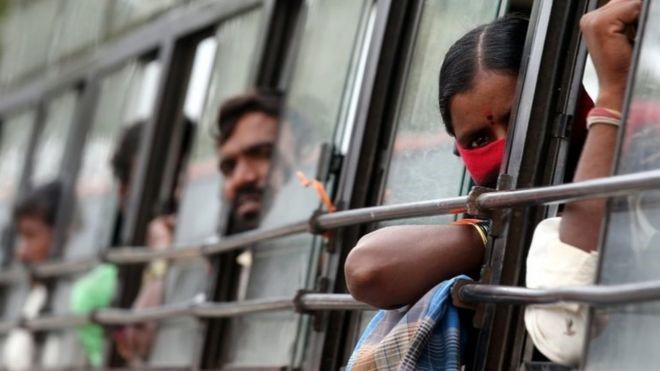Corona virus: How safe is train, bus or air travel?
We are apprehensive about the risk of getting infected by the corona while traveling in public transport such as trains, buses and airplanes, along with the relaxation of lockdown. There is no specific research on this, but based on the information we have about the corona virus infection, we can assess it.
How safe are trains and buses?
The corona virus is spread when an infected person coughs, sneezes, or leaves the virus in the air through the breath.
Viruses floating in air can enter through the eyes, nose and mouth of any person’s body directly or by touching something where the viral particles have fallen.
There is a greater risk of infection from outside. Closed places in which the air is well maintained are less risky for infection. So public transport in which you can open the window, they are a bit better in this respect.
Risk in trains and buses depends on how crowded it is and how far you can distance yourself from others at places like bus stops and stations.
British Prime Minister Boris Johnson, bypassing the previous restrictions, announced that now anyone can use public transport at any time.
According to the guidelines issued there, you have to keep a distance of one meter from other people outside the house.
Although it is known that the virus can remain on the surface in closed places such as public transport, but in reality it is not definitely known how often it can turn into a new infection.
Some groups have tried to find out how much risk is there in the train, but still the question has not been answered.
Old research has definitely mentioned the connection between London’s underground traffic and the possibility of spreading respiratory disease.
Doctor Lara Goske of the Institute of Global Health says that her research published in 2018 has shown that people who use underground transport more often are more likely to show flu-like symptoms.
Keeping distance, wearing masks and avoiding touching the surface (washing hands if touched) can reduce your risk of getting infected.
Advice for riders
Regarding this, the advice given by the British Government to the people of their country can also be useful in other places. The government there said that people should consider all other options before using public transport. If they cannot go on foot, cycle or drive themselves then they should take some precautions.
– You can avoid traveling at a time when there is a lot of crowd.
– They can take the route which is less busy and avoid changing the vehicle frequently.
– Wait for all the people to get down before boarding the car.
– Keep at least one meter away from people.
– After returning from journey, wash hands for at least 20 seconds.
Also, wearing a mask is mandatory.
How much risk in the plane?
It is a common belief that you are more likely to fall ill in a plane because you breathe “stale” air.
In fact, you can get much better quality air in a plane than a normal office. In comparison to train and bus, you definitely get much cleaner air in the plane.
Professor Qingyan Chen of Purdue University in Indiana estimates that air changes every two-three minutes in an airplane, whereas in an air-conditioned building it takes 10 to 12 minutes.
Most airplanes have a high quality air filter system called HEPA.
It can capture smaller particles of air than any normal air conditioner. Some viruses can be in it.
It helps to bring fresh air from outside into the cabin while many air conditioners rotate the air in the room to save energy.
However, one problem in the airplane is that it is difficult to make distance with other passengers, which increases the risk of infection significantly.
It is a difficult task to talk of a higher risk in a particular type of vehicle than another vehicle, because there are many reasons to reduce and increase the risk.




